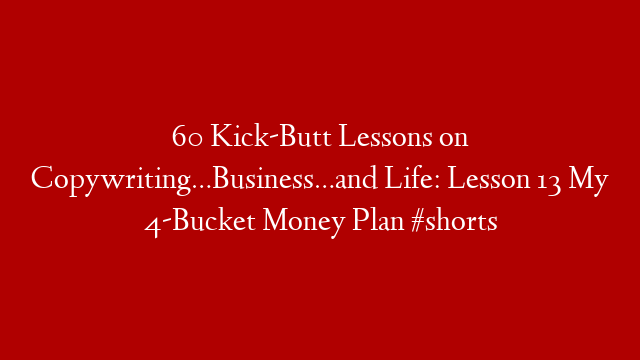When you’re new in business and you first hear that it is key to gain the skill set of how to do copywriting, you might cringe and wonder how in the world you will stack yet another thing on your list. I want to share this checklist with you so you have a place to start in the learning process.
Before getting into your 7 key components, you’ll want to answer these questions –
- Who is your ideal client or customer?
- What do they want, is it related to what you’re selling?
- What problem do they have? Either in getting what they want, or, that causes them to want what they want.
- How do they talk about the problem?
Now that you have a few questions on the top of your mind, you can begin to fill in the 7 key components for copywriting.
The first part will be crafting your headline. You want your headline to join the current conversation going on in your customer’s mind. For example if you sell quality men’s suits at wholesale prices and you know that your ideal client talks about wanting to impress clients without having to spend a fortune on his wardrobe, your headline may look like this: “How To Impress People With Your Suit Without Spending a Fortune”
The next component is believability. In other words, if you make a claim (and it is best that you do), how can you prove it? You can use customer testimonials, your business track record, or social proof now that the age of social media is so hot. Use whatever is most important to your audience to build up your credibility. Sometimes it will be as simple as your credibility as a person and how you’re talked about by your customers.
Now you want to move into your demonstration. You can use free samples of your product. A video demonstration online or perhaps a blogging tutorial. Maybe even a step-by-step diagram in a brochure. Pictures of people using your product will be very effective as well.
You’ll want to use repetition when you share your new idea or call to action. A strong example of this is a late night or even a mid-day infomercial. When the infomercial comes on, I’m sure you’ve noticed how many times they call you to take a specific step (usually it will be a total of at least three times). Like “call now” or “order now” and they repeat the phone number or website over and over.
Make sure your language is conversationally good. Copy is nothing more than spoken language in written form.
A strong offer or what some call an irresistible offer. Make it so easy for them to say “yes” instead of “no”. Back to watching those infomercials – notice how they will add in a second item and/or make the shipping free and/or offer an introductory price for the first so many people. The risk free offer or trial offer is something that is easy to do. They can try it before they commit.
Have a compelling call to action with clear directions on what you want your readers or watchers to do next. Leave nothing to chance.
How do you do copywriting so your reader feels that you’ve been at their kitchen table with them in their daily life? The customer will look at whether you know who they are and if you know what is on their mind. They will connect when you speak their language. They will ask, “can this person help me?” They will have personal sensors that tell them if what you are offering seems familiar, feels comfortable, and appears trustworthy.
In summary, keep in mind this quick list of the seven basic reasons people buy things –
- To Make Money
- To Save Money
- To Save Time
- To Save Effort
- To Improve Their Health
- To Increase Their Pleasure
- To Eliminate Pain
I hope you’ve found value in this article today. I wish you the best in your copywriting journey.


